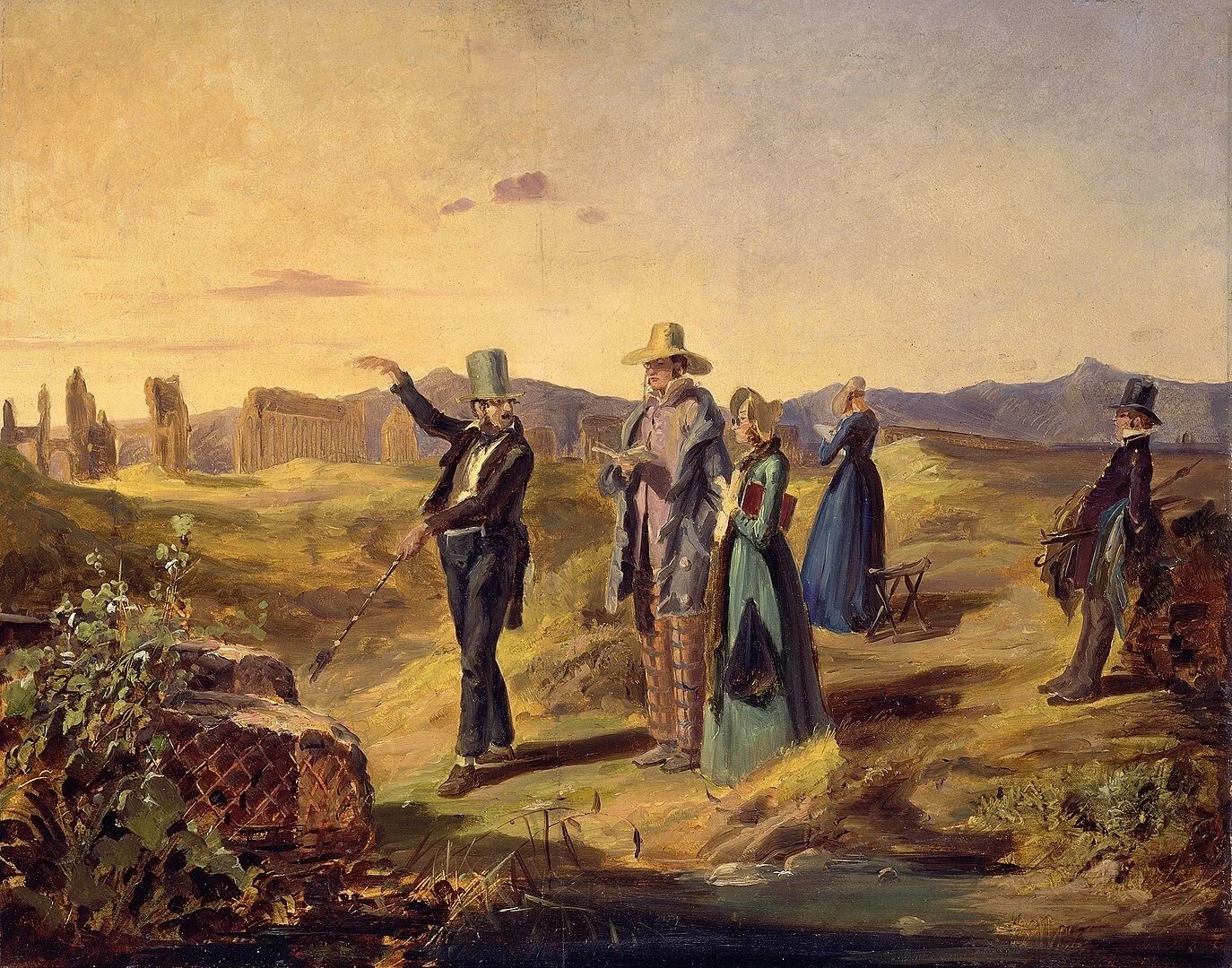Professor Butter Beard’s “Grand Tour”
Welcome sigh. It is the season of “Spring Break.” My first memories include being loaded while still asleep into the family Volvo before sunrise and then snoozing against coolers crammed full with iced tea and cold fried chicken as we headed onto the highway and the long two-day drive to visit my mother’s parents in Florida. Remember Triptiks from AAA? Disneyworld was the promised reward, but I remember being even more fascinated with the aromatic orange groves and the monster-like fresh shrimp purchased directly from the fishing boats upon their return to the marinas.
Those necessary seasonal breaks from academia grew into something a bit more cultured over time including springtime journeys to London, Scotland and Wales, weddings in sunny California and Easter celebrations in Bruges and Belgium. But when it comes to my favorite way to celebrate the welcome goodbye to winter, it is the memories of my early spring tours of Italy that wake up my soul with vivid flashbacks and stimulate all five of my senses.
In the early years of the 18th and 19th centuries, it was the fashionable requirement for wealthy British families to send their son and heir on a springtime tour of Europe. This journey was designed to introduce the young next Lord to the art, history and culture of the continent culminating in at least a fortnight spent absorbing the essence of Italy. While the original “Grand Tourists” were mostly male, there were a few enlightened families who sent their daughters on this vision quest as well. These lucky youngsters were often accompanied by a “learned guide” – a person who could act as a tutor and chaperone for their young charges. This connection always brings to mind Miss Charlotte Bartlett, engaged to travel as the moral mentor to the passionate Miss Lucy Honeychurch as she awakens to the sensual offerings of Italy in “A Room With A View.”
The Grand Tour would commence with a journey south from The British Isles, either by ship or overland by horse and carriage. While in Venice, the tourists would travel up and down the Grand Canal, attending concerts, visiting churches and as often as possible attending an evening regatta or masquerade ball. Vesuvius, the volcano that dominates the Bay of Naples, was having an active time in the 1760’s and 1770’s, and most days steam could be seen rising from the crater and frequently, especially after twilight, “lucky” visitors could witness streams of glowing lava as part of a nightly spectacle. During their time in Rome, these travelers participated in excavation work in and around the ancient ruins of the Roman Forum and the Colosseum in hopes of discovering a lost Roman statue or sculpture to take home as a souvenir. To this day, many British estates can boast of a Venetian canal painting by Giovanni Canaletto or a garden graced with a sculpted Venus.
The German 19th century painter Carl Spitzweg offers us a humorous watercolor portrayal of these earnest English tourists soaking in the culture and atmosphere of a ruined temple site of Paestum, south of Naples. What I am offering is a culinary “memory mashup” combining the oranges of Sicily, basil grown on the hills of Luguria, and Tuscan hazelnuts and olive oil all baked together in a luscious cake ready to be served alongside your favorite gelato or orange sorbet. Benvenuta primavera!
Olive Oil Cake with Basil, Hazelnut and Orange
1 (8-inch) cake
Ingredients:
3 large eggs, room temperature
¾ cup white sugar
½ cup of your best olive oil (plus 3 Tbsp more for a final brushing)
½ cup buttermilk
½ tsp vanilla paste
1 ¼ cups all-purpose flour
¼ cup (4 Tbsp) hazelnut flour
1 ½ tsp baking powder
½ tsp kosher salt
Zest of 1 large ripe orange
12 leaves fresh basil cut into thin julienne strips – go ahead and use the hydroponic basil you can find in the market’s now and then plan to plant your own in just a matter of weeks!
Confectionary sugar to dust the top of the finished cake
1) Preheat the oven to 350 degrees. Butter the interior of an 8-inch round cake pan and line the bottom and halfway up the sides with a round piece of parchment paper. Butter the paper and then dust the entire interior of the pan with a bit of all-purpose flour.
2) In a medium bowl, whisk together the flour, baking powder and salt. Set aside.
3) In the bowl of a standing mixer, whisk the eggs and sugar at a high speed for one minute. Remove the whisk attachment and replace with the paddle. Add the oil in a slow steady stream with the mixer on medium, beating until combined. Add the buttermilk, beating until combined. Reduce the mixer to low and add the vanilla paste, the citrus zest and the julienne strips of basil.
4) While on low, gradually add the dry mix until no lumps remain and pour the batter into the prepared pan.
5) Bake roughly 30 minutes, until an inserted wooden skewer comes out clean. Let the cake cool in the pan on a wire rack for 5 minutes and then turn out the cake keeping the parchment in place. Brush the top of the cake lightly with 3 Tbsp of the same olive oil you used in the batter. Let the cake cool completely, remove the parchment paper and dust the top of the cake with confectionary sugar before serving.
6) I suggest serving with vanilla bean gelato or orange sorbet.



